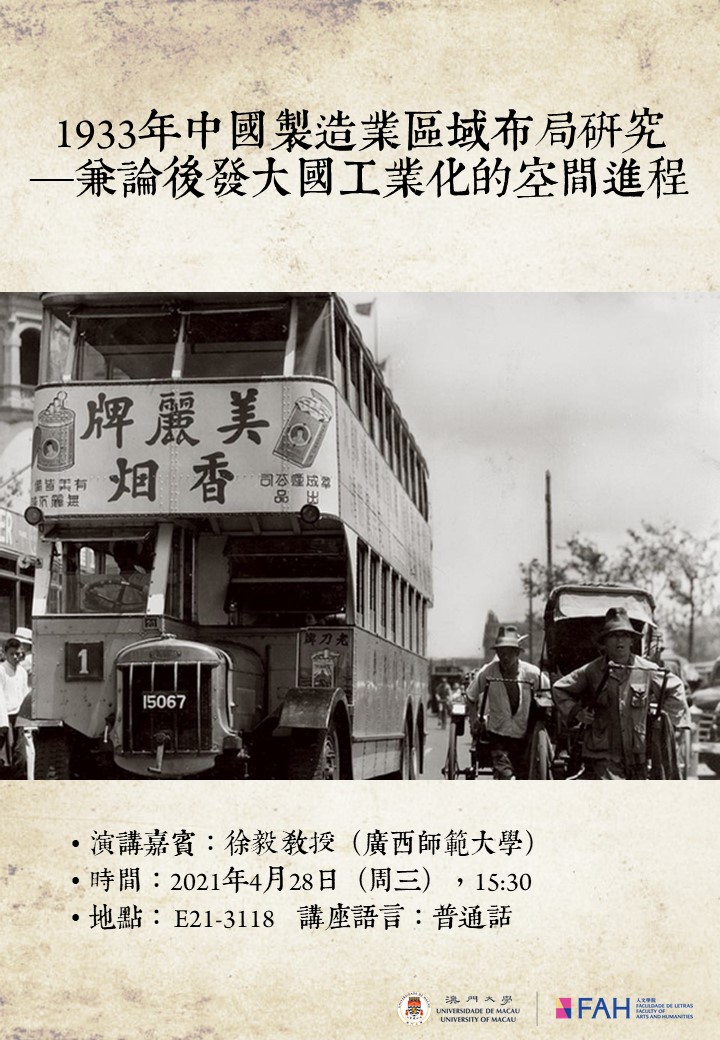

The Spatial Distribution of Chinese Manufacturing Industry in 1933: and A Discussion on the Spatial Process of Late-Developing Countries’ Modernization 1933年中國製造業區域布局研究—兼論後發大國工業化的空間進程
2021-04-28 @ 3:30 pm ~ 5:00 pm
A database based on A Survey Report of Chinese Industry by Liu Dajun and other statistics in 1930s has been constructed as the main source for this research. This database reveals that the geographic industrial distribution of China in 1933 demonstrated a trend “contiguous distribution in the east, scattered distribution in the west”. This trend was caused by the distinguishes of the eastern and western region in natural resources, transportation conditions and connections with external markets. Without support form a powerful state, the industrialization of modern China faced many obstacles, such as the shortage of market, spatial gap between the eastern region and the western region, vicious competition among different regions and the mismatch of natural resources and investment and professional human resources.
我們嘗試利用20世紀30年代的各種統計資料對劉大鈞的《中國工業調查報告》進行系統修正與完善,構建一個1933年中國製造工廠縣級信息數據庫。我們的分析結果顯示:經過20世紀前30年的較快發展,1933年的中國已經呈現出東部沿海製造工廠“連片發展”的趨勢,以及中西部省區接受東部産業轉移而形成的製造工廠“散點分布”的態勢,這與東中西部的資源禀賦、交通條件、進入國際國內市場的深度和廣度密切相關。但是,缺乏統一而强大的國家政權推動的中國工業化進程,仍然面臨著國內超大市場啓動乏力,東中西部空間隔閡、區域間的産業惡性競爭、農礦資源與資金人才市場配置不當等問題和困境,嚴重影響了中國工業化在全國範圍的擴散以及規模質量的提升。

